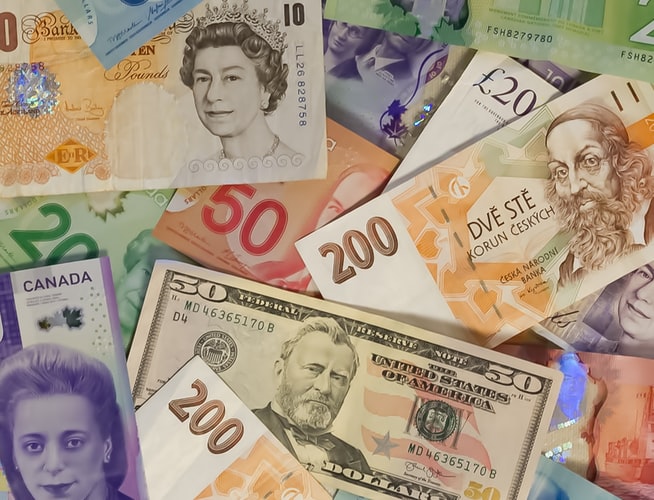After a nervous end to last week that saw global equities dropping further back from recent highs amid continued choppiness in bond markets, the weekend break appears to have given markets some much needed time for reflection and cooler heads appear to be prevailing this Monday. Global bond markets continue to rally after last Thursday’s sharp sell-off, though the pace of the move is much more measured compared to the panicked rally seen last Friday and volatility appears to be dying down. US 10-year bond yields are currently down just under 3bps and are around 1.43%, back from last Thursday’s highs of above 1.60%. Action by the RBA to keep yields under control and threats of action from the ECB and BoJ are likely helping add to the sense of calm.
Looking at the market more broadly, calmer bond market conditions are easing nerves elsewhere and are allowing market participants to refocus their attention on the still very much positive global fundamental backdrop. European bourses are higher across the board (Stoxx 600 +1.4% to around 410) and US equity futures (S&P 500 futures +1.1% to close to 3850) are pointing to a positive open on Wall Street as markets focus on good news out of the US; the FDA gave J&J’s vaccine Emergency Use Authorisation, setting the stage for an acceleration of the country’s vaccine rollout and US hospitalisation fell below the 50K mark for the first time since last November. Meanwhile, the House of Representatives voted in favour of US President Biden’s $1.9T stimulus package (as expected), sending the bill to be voted on in the Senate. Slightly softer than expected Chinese PMI numbers from over the weekend were for the most part ignored by global markets, as the data showed that the Chinese economy is at least still recovering.
In fitting with the broadly risk on market tone, energy markets trade in the green (WTI +1.0% or 60 cents to back above $62.00/barrel) ahead of this week’s OPEC+ meeting where the cartel is expected to agree on an increase in crude oil production. Meanwhile, calmer bond market conditions and lower yields are helping precious metals recover, with spot gold (XAU/USD) back from five-month lows under $1720 to trade closer to $1740.


Photo by John McArthur.
USD, EUR, JPY
Despite the marked improvement in global risk appetite, safe-haven USD has been in demand on Monday morning. The Dollar Index (DXY) has rallied back above the 91.00 level for the first time since early February (when it eventually went as high as 91.60). DXY is getting tailwinds from weakness in the euro and yen.
Starting with the euro (for reference EUR/USD has dropped below 1.2050); slightly stronger than expected final Eurozone manufacturing PMIs for February and German Consumer Price Inflation numbers have been unable to distract from negative EU lockdown news (Italy to tighten restrictions in Turin, Milan and surrounding regions and Germany to extend travel restrictions). Moreover, euro appears to be suffering from the ECB’s comparatively more dovish stance on the recent rise in bond yields versus the Fed; ECB officials went as far as calling for an increased pace of bond buying at the end of last week, after President Lagarde signalled the bank is closely monitoring bond market developments. Fed members are yet to signal any concern.
A similar sentiment appears to be weighing on the yen (for reference, USD/JPY is at highest levels since last August in the 106.70s); reports this morning suggested the BoJ is prepared to aggressively defend its target yield range for government bonds. BoJ sources said that the bank could take action prior to the 10-year yield hitting 0.2% and would not allow it to hit 0.3%. Again, the Fed has indicated no such concern about rising yields, and this dovish divergence is bullish for USD/JPY. The Yen seems not to have paid much attention to PM Suga’s announcement of the removal of state of emergency in six of the country’s prefectures and that Tokyo’s state of emergency would be lifted on the 7th of March.
GBP
Not one of the best performers out of the G10, but broadly holding up fairly well. GBP/USD is back from overnight highs having hit resistance at 1.4000 and currently trades around the 1.3925 mark, where it is roughly flat on the day. EUR/GBP is a little softer and trading back below 0.8650. After last week’s “Roadmap to Reopening” announcement from the UK PM, which outlined the country’s plan for to ease pretty much all pandemic restrictions by mid-June (and injected a decent dose of optimism into GBP), focus is now on this week’s budget, which will be unveiled on Thursday.
As usual, much of the contents of what is in the budget has already been leaked to UK press so the GBP market reaction later this week is likely to be limited. According to the Telegraph, the budget is set to contain three distinct “phases”. Phase One is mainly about ongoing Covid-19 support schemes, which are set to be extended to June (furlough, business rates relief and VAT reductions, stamp duty holiday and “bounce back loans”). Phase Two is going to be about some fiscal injection to accelerate the post-Covid-19 recovery (£5B “restart” fund for giving small business grants, a £22B national infrastructure bank and aid for first time home buyers). Phase Three is going to be about paying for everything and is likely to entail freezing income tax rates and a modest increase to corporation tax.
Though the support on offer from the UK government is much smaller as a percentage of GDP than President Biden’s stimulus plan in the US, GBP seems to have taken the leaked details of the budget well. Elsewhere, sterling remains broadly underpinned as the UK’s vaccine rollout continues to outpace the rollouts in most other developed market countries (namely, the Eurozone’s), with over 20M Brits having now received their first jab, while markets are also comforted by the continued fall in new Covid-19 infections and deaths in the country. Slightly stronger than expected final Manufacturing PMI numbers for February and mixed BoE mortgage lending data seem not to have impacted sterling much.
AUD, NZD, CAD
CAD and the Aussie are amongst the best G10 performers, up 0.4% and 0.3% respectively versus the US dollar, with both taking advantage of the broadly risk on market tone and favourable movements in commodity markets. AUD/USD has been rangebound around 0.7750 in recent trade, up from last week’s sub-0.7700 lows and seems to have shrugged off intense Australian bond market action overnight; the RBA aggressively defended its 0.1% bond yield target for the Australian government 3-year bond, buying AUD 4B in 3-year bonds. As a result, Australian bond yields cratered, with the 10-year yield dropping 20bps, its largest decline since pandemic-induced market turmoil last March. House Price data from CoreLogic might be helping the Aussie, after data showed the sharpest increase in house prices since 2003.
NZD is not performing quite so well and is flat versus the buck on the day (with NZD/USD around last Friday’s lows in the 0.7250 region). Auckland is back in a snap lockdown, this time for seven days, after a new local Covid-19 case was discovered.
Day Ahead
Attention will be back on the Fed from 1400GMT/0900EDT, with key FOMC members John Williams (President of the NY Fed) and Lael Brainard both speaking. Neither have expressed concern about the recent rise in bond yields and with yields well back from last week’s highs, markets will expect them to reiterate this stance.
Attention State-side will then turn to various US economic data releases, the highlight of which will be the February ISM Manufacturing PMI survey set for release at 1500GMT/1000EDT. A strong number is expected to show that the US manufacturing sector continues to perform well.
Focus will then be on ECB speakers, with Vice President Luis de Guindos speaking to 1520GMT/1020EDT, followed by President Lagarde at 1610GMT/1110EDT. As noted, the ECB has been much more dovish about recent bond market moves and markets will be on the lookout for any hints that the ECB might be considering accelerating the pace of its asset purchases (one ECB member called for this last week).
The main event for AUD traders will be the RBA monetary policy decision overnight. The bank is expected to keep its Cash Target Rate and 3-year government bond yield target unchanged at 0.1% and is expected to maintain its QE programme at AUD 100B. Moreover, the bank is expected to repeat its guidance that it will not raise rates until inflation is back sustainably within its 2-3% target bank, something its does not expect to happen until 2024. Focus will be on anything the RBA might say about recent bond market moves, following the recent rise in Australian government bond yields and aggressive action by the bank to keep 3-year yields close to 0.1%.
Otherwise, attention remains on the usual themes; US fiscal stimulus and pandemic updates (i.e. vaccine rollouts, lockdowns and lockdown easing).




